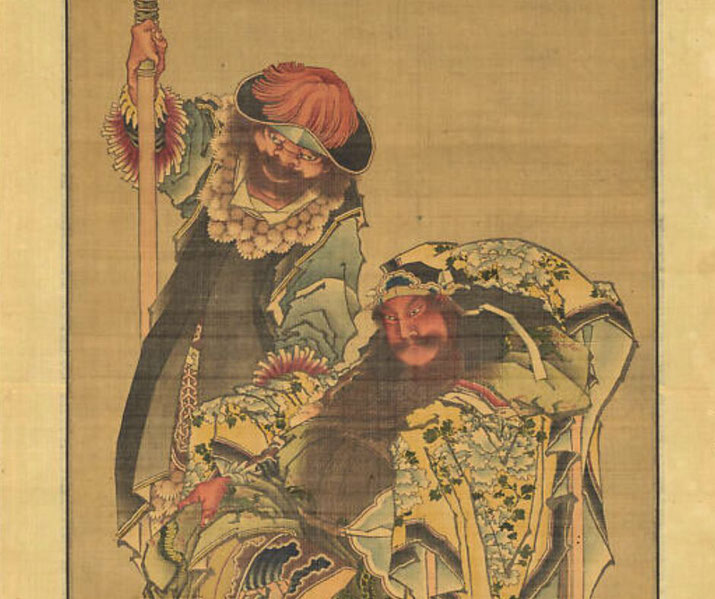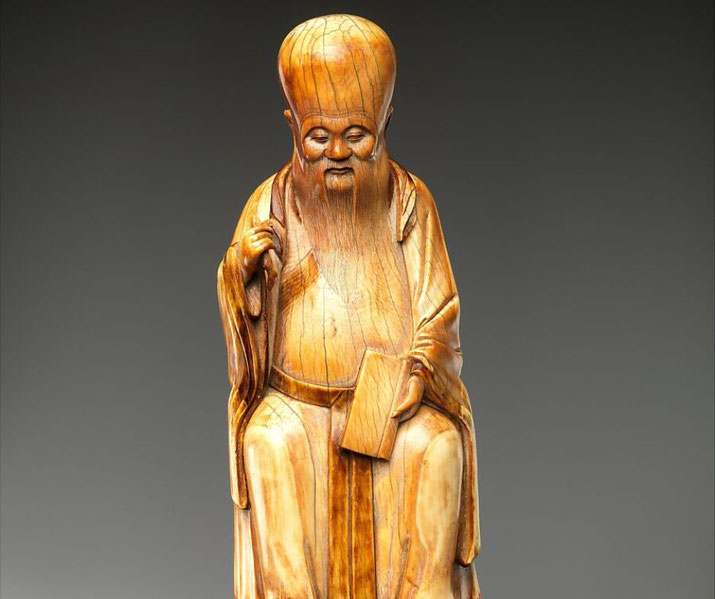A glimpse into the fascinating pantheon of Chinese gods and goddesses

In ancient Chinese religion, there are hundreds of stories of gods and goddesses who did all manner of incredible things, like forming the universe, controlling the weather, or interfering in the lives of the common people.
Their myths have continued to be popular and frequently appear in Chinese art, fictional writing and various religious festivals.
From Guanyin, the bodhisattva of mercy, to the Jade Emperor, who led the heavenly government, these gods were thought to be responsible for the rise of and fall of imperial dynasties, as well as the fluctuating fortunes of the Chinese civilisation grew over thousands of years.
The deep history of Chinese religion
The earliest evidence we have about Chinese religious belief appears during the Shang Dynasty (c. 1600 to 1046 BCE), where people honoured their ancestors after their deaths, and believed spirits lived in various natural objects like trees, mountains, and rivers.
Also, they had developing ideas about how the universe worked that would lay the groundwork for later gods.
Then, in the Zhou Dynasty (1046 to 256 BCE), they focused on the idea of Tian (Heaven), which was thought to be the highest power that ruled the universe.
In it, the Chinese pictured a heavenly government that mirrored the structure of their own rulers on earth.
Over time, the philosophical ideas in Confucianism taught respect for rulers and called for harmony in society, while the growing popularity of Taoism said that people should live in balance with nature.
As a result, a new range of gods, immortals and spirits appeared in the Chinese pantheon of deities.
When Buddhism arrived from India during the Han Dynasty (206 BCE to 220 CE), it introduced some Buddhist figures as well.
By the time of the Ming (1368 to 1644 CE) and Qing (1644 to 1912 CE) dynasties, the list of gods had expanded substantially, and the myths associated with them had become quite complex.
Some of the most important Chinese gods and goddesses
Jade Emperor (Yù Huáng or Yù Dì)
The Jade Emperor rules Heaven and all places below, including Earth and Hell. People often show him as a wise and kind ruler and the highest official in the heavenly government.
Guanyin (Kuan Yin or Quan Yin)
Guanyin is a bodhisattva who promised to reach Buddhahood only after all living beings did. She is called the Goddess of Mercy and Compassion. At first a male god in Indian Buddhism, Guanyin changed into a female figure in China and is highly respected for her compassion and care.
Nuwa (Nüwa)
Nuwa is linked to creation and repair stories. One famous story says she created humans, fixed the pillar of heaven when it was broken and saved the world from chaos.

Fuxi (Fúxī)
Fuxi is seen as a culture hero who started many human practices like hunting, fishing, and keeping animals. Similarly, he is often shown with Nuwa and is specifically linked to the invention of the I Ching, an old book used for telling the future.
Shennong (Shénnóng)
Shennong is respected as the founder of farming, herbal medicine, and markets, through which he helped civilisation grow. He is known as the Divine Farmer.
Zhong Kui (Zhōng Kuí)
Zhong Kui is a god who is also called the Ghost King. He protects against evil spirits and demons. Although he looks fierce, he is seen as a good figure, which is why his image appears on charms and domestic art to keep evil away.

How Chinese mythology and cosmology works
In the mind of the ancient Chinese people, the cosmos was an interconnected system of forces that existed in opposing pairs on various levels of spiritual and physical existence.
Central to this system is the concept of qi (vital energy), which flows through all parts of the universe, from stars to living beings and non-living things.
This understood that people, nature, and the heavens all kept a delicate balance which could only be accessed by humans through the study of philosophy or certain religious rituals.
This structure follows several main principles:
Concepts of Heaven, Earth, and the Underworld
In traditional Chinese thought the universe has three parts: Heaven (Tian), Earth (Di) and the Underworld (Yinjian). The Jade Emperor rules Heaven, and Yama, known as Yanluo Wang, rules the Underworld.
Creation myths
There were different stories that explained how the universe and life began. The best-known tale features the original being Pangu, who first awoke in a cosmic egg, before he split yin (chaos) and yang (order) to create Earth and Sky. An alternative version tells how Nuwa made humans from yellow earth or clay.
Yinyang and the Five Elements
Yinyang and the Five Elements (Wuxing) are one of the most important ideas in Chinese cosmology. Yinyang shows two forces in the universe: they are paired, rely on each other and are always changing. The Five Elements, Wood, Fire, Earth, Metal and Water, make up the universe. As such, they link different gods to the seasons, or the directions on the compass.
The heavenly government
Chinese cosmology often reflected the world on Earth. For example, just as the imperial government was directed by the emperor, the heavenly government was led by the mythical Jade Emperor. Likewise, the earthly emperor had officials to carry out his orders, the gods were placed in charge of parts of the universe and human life by the Jade Emperor.
Karma and reincarnation
Finally, the influence of Buddhist beliefs introduced the idea of karma and reincarnation into Chinese views on life, death and afterlife. This explained that the cycle of death and rebirth was watched over by gods, such as the Ten Kings of Hell, whose task it was to judge souls and decide what they would be in their next lives on earth.
How to worship and honour the Chinese gods
There were a number of ceremonies and rituals that people could undertake in order to show the necessary respect, gratitude and prayers to the gods and goddesses.
These could include daily household rituals, temple rites, or even participation in large annual festivals.
Household worship
Many Chinese homes have a shrine for the gods where they would make daily offerings of incense, food and tea. It often had pictures or statues of the gods, as well as representations of a family’s ancestors.
Temple festivals
Temples often held festivals, usually on a deity’s holy day, which would include offerings, music, dance and sometimes even a traditional opera performance. For example, the Nine Emperor Gods Festival is a nine-day Taoist event in which people make offerings and parade statues through the streets to ask for blessings.
Divination practices
Fortune telling has long been a common element in Chinese spirituality. It helped people seek guidance from the gods about the future. They would often perform these methods at temples. Specifically, they cast lots or consult the I Ching to seek guidance.
Pilgrimages
Religious journeys, which are often called ‘pilgrimages’ in the west, to sacred mountains or temples were an important practice for much of Chinese history. For example, Mount Tai is a holy site to the Jade Emperor. As a result, emperors and ordinary people have both travelled there to worship for many centuries.
Ancestor veneration
A family’s deceased relatives are called the ‘ancestors’ and they are seen as protective spirits. In order to ask for their help, you would conduct a ceremonial offering of food and drink to their spirits. They also involve burning joss paper during the Qingming Festival.
Buddhist and Taoist ceremonies
These practices include meditation and the recitation of scriptures. Participants also take part in rituals to honour gods or seek spiritual growth.
Life cycle rituals
Finally, people asked gods for blessings during key events in life, such as birth, marriage and death, with specific ceremonies.
What do you need help with?
Download ready-to-use digital learning resources
Copyright © History Skills 2014-2025.
Contact via email
With the exception of links to external sites, some historical sources and extracts from specific publications, all content on this website is copyrighted by History Skills. This content may not be copied, republished or redistributed without written permission from the website creator. Please use the Contact page to obtain relevant permission.





